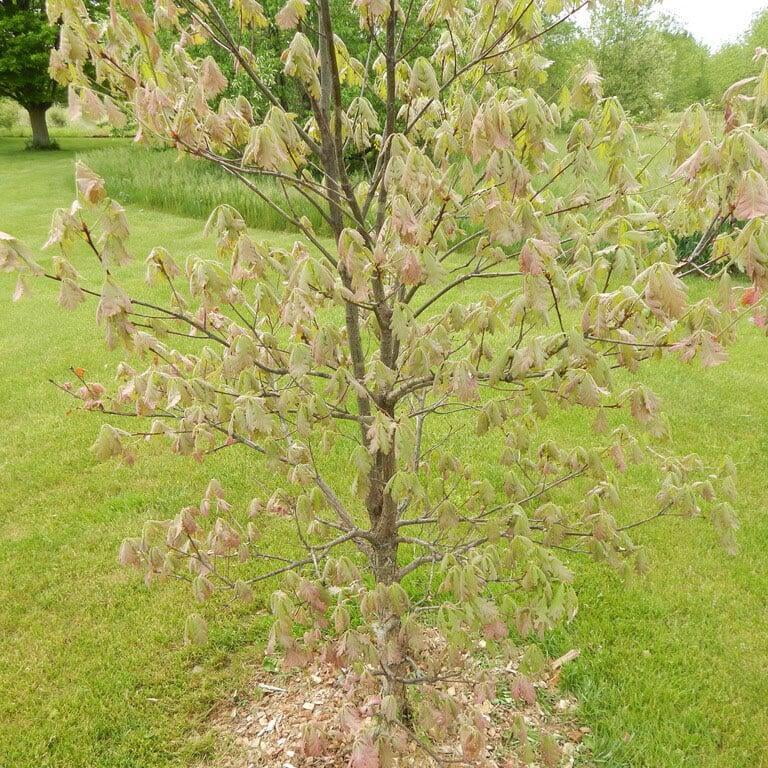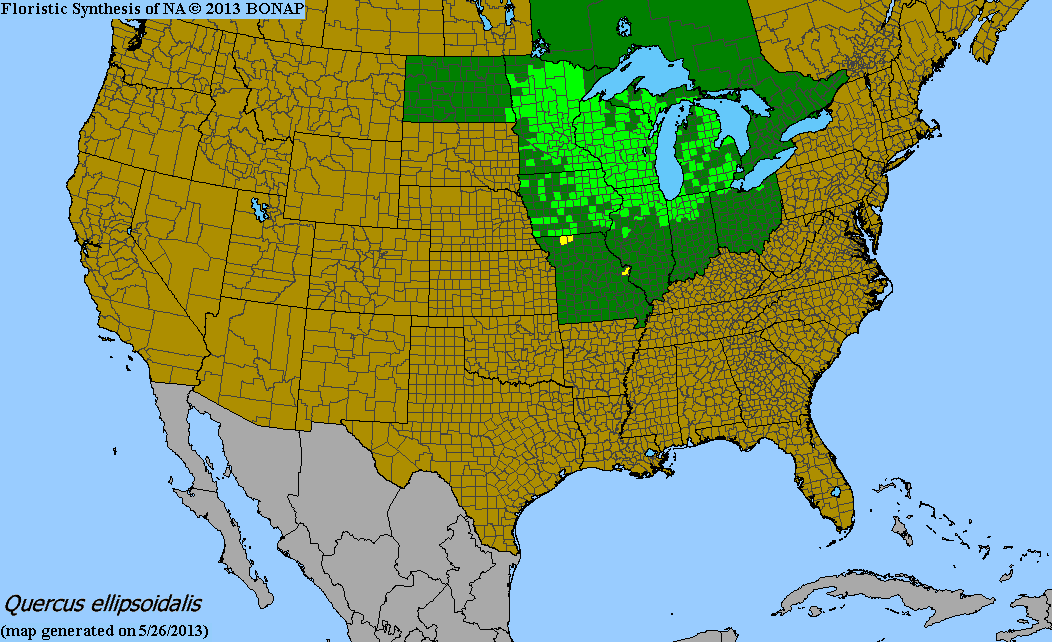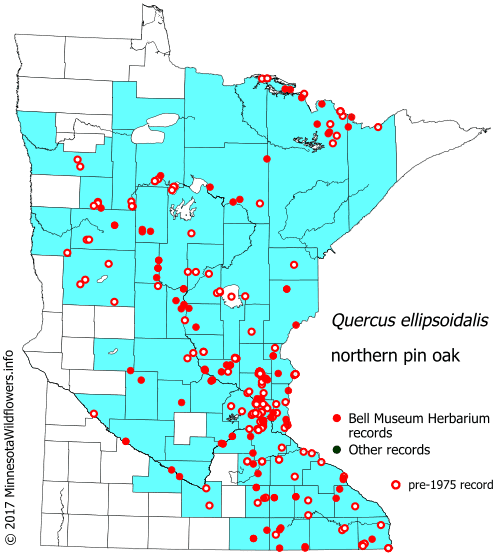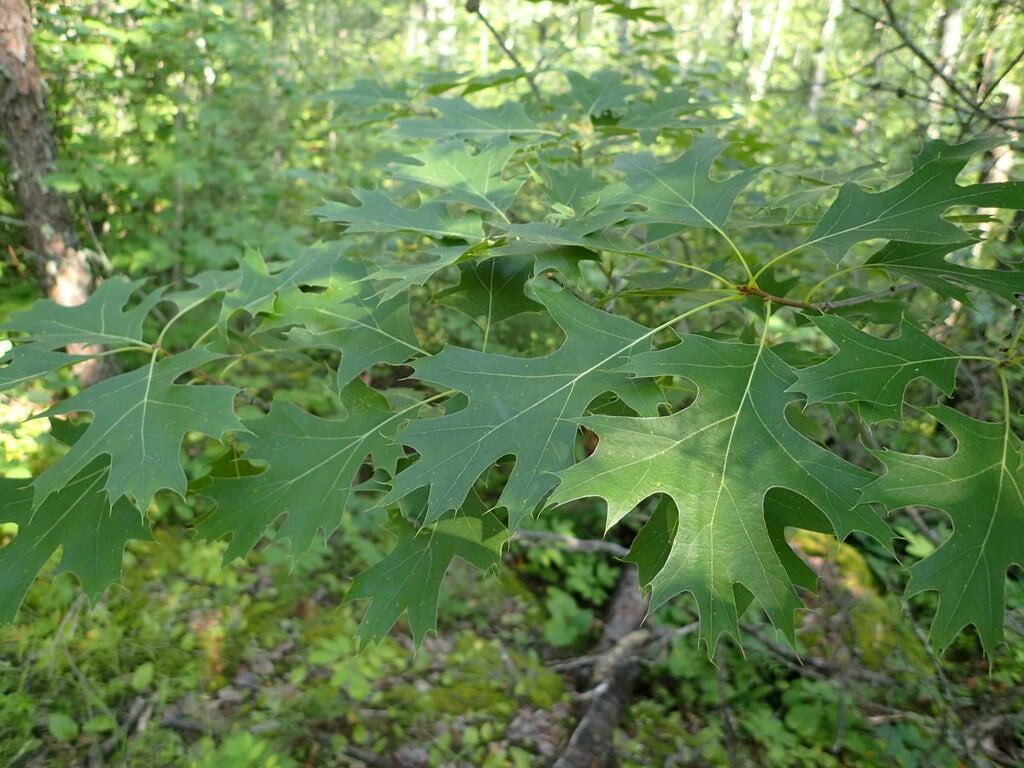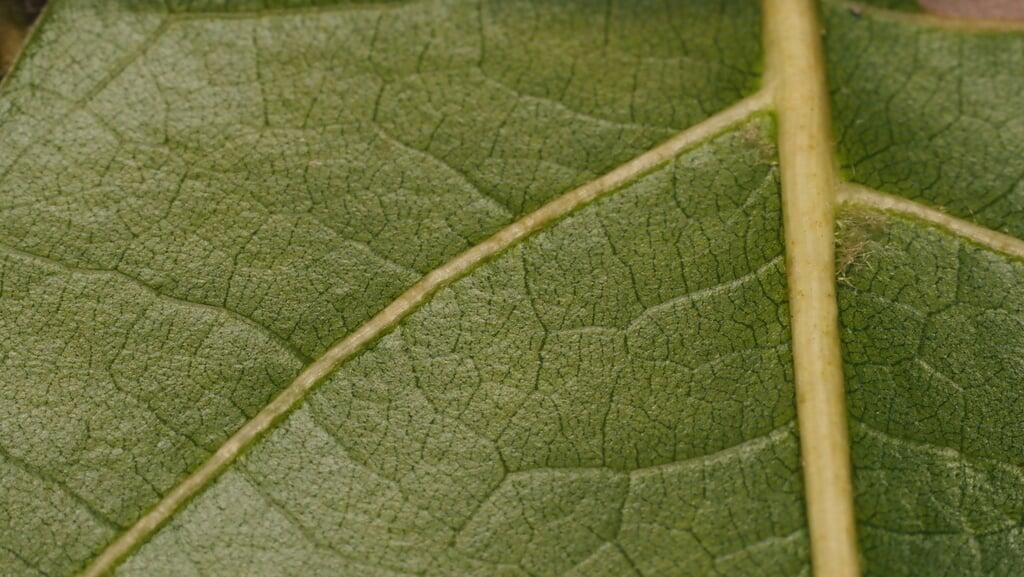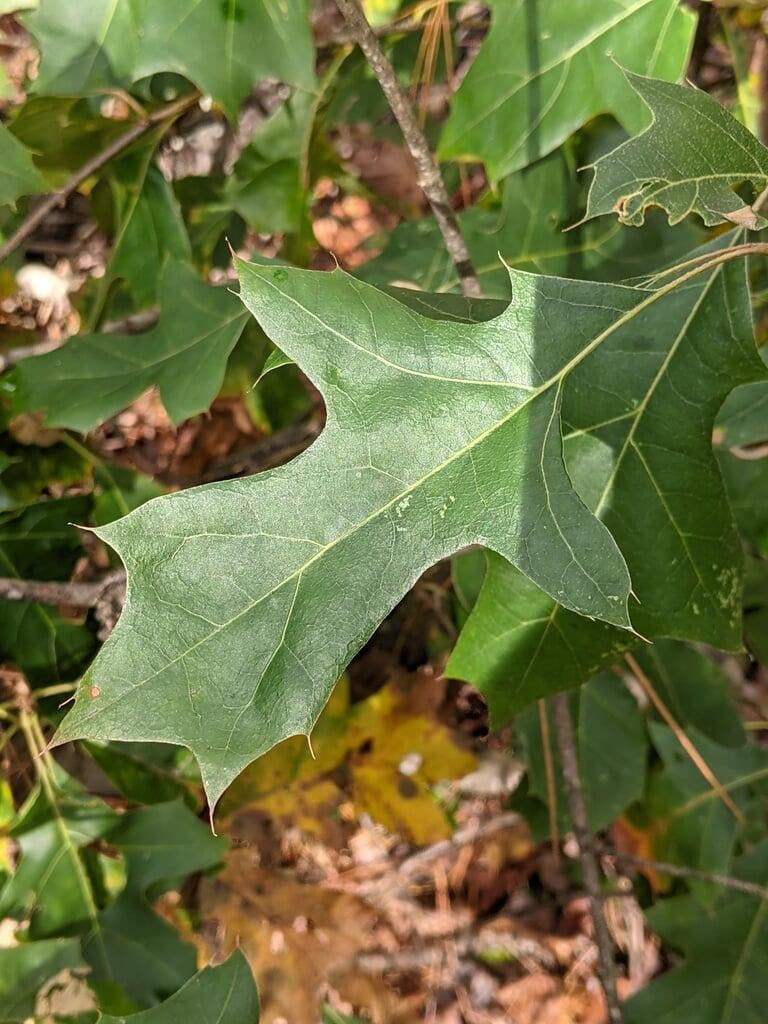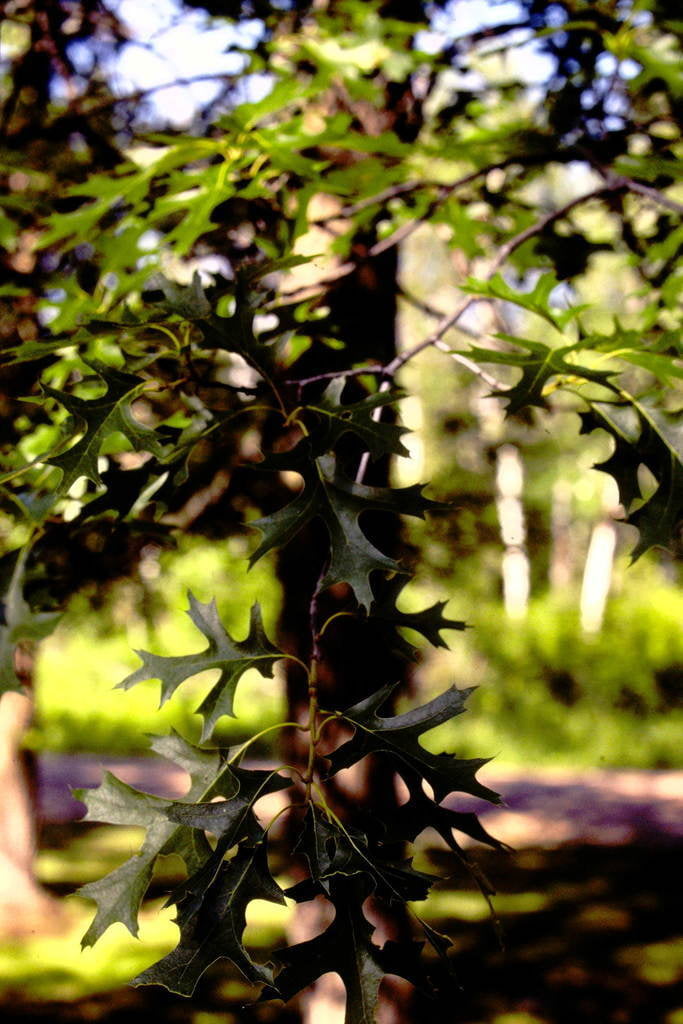Quercus ellipsoidalis
Northern pin oak description:
Quercus ellipsoidalis, commonly known as Northern Pin Oak or Hill's oak, is a medium-sized deciduous tree that belongs to the Fagaceae family. This native tree can be found in the northeastern and north-central regions of the United States, including parts of the Great Lakes region. At maturity, the Northern Pin Oak typically grows over 100 feet in height and 30 to 40 feet in width, with a broadly conical to oval shape. It has a single trunk that can reach up to 3 feet in diameter and a dense crown of branches that extend to the ground.
The leaves of Quercus ellipsoidalis are simple, alternate, and deeply lobed with bristle-tipped lobes. They range in size from 3 to 6 inches long and 2 to 4 inches wide, with a glossy dark green upper surface and a pale green lower surface. In the fall, the leaves turn a beautiful shade of red, orange, or brown before dropping from the tree. The Northern Pin Oak is monoecious, meaning that it produces separate male and female flowers on the same tree. The flowers are inconspicuous and appear in the spring when the leaves are just beginning to emerge.
Quercus ellipsoidalis is a valuable tree for its timber and wood products. Its wood is hard, strong, and durable, making it ideal for flooring, furniture, and veneer. It is also used for fence posts, railroad ties, and other outdoor applications. In addition, the Northern Pin Oak is a popular tree for urban forestry and landscaping due to its attractive foliage, tolerance of drought and compacted soils, and ability to support local wildlife. Overall, Quercus ellipsoidalis is a versatile and resilient tree that provides many benefits to humans and the environment alike.
Native Range:
Northern pin oak is found natively growing in the Midwestern staters from North Dakota on the western edge to Ohio in the East. Its range extends South to Missouri.
Standard Plant Information:
Plant Height: Over 100'
Bloom time: May
Preferred Habitat: Does well in part shade to full sun with heavier, well drained soil.
Planting:
Planting a tree seedling or small potted tree properly is important to ensure its healthy growth and development. Here are the steps you can follow to plant a tree:
Choose the right spot: Select a spot with adequate sunlight, water, and soil drainage. Make sure the tree has enough space to grow to its full size without interfering with other plants, structures, or utility lines.
Prepare the soil: Dig a hole that is twice as wide and slightly shallower than the root ball of the seedling. Remove weeds or debris from the area. Loosen the soil around the edges of the hole to help the roots grow more easily.
Plant the seedling: Place the seedling in the hole, making sure the top of the root ball is level with the ground surface. Gently spread out the roots and fill in the hole with soil, tamping it down lightly as you go.
Water the seedling: Water the tree deeply and thoroughly after planting, making sure the soil is evenly moist. This will help settle the soil around the roots and eliminate any air pockets.
Monitor the growth: Keep an eye on the seedling to make sure it is getting enough water and sunlight, and that it is not being attacked by pests or diseases. Prune any damaged or dead branches as necessary, and provide support if needed.
By following these steps, you can help ensure the healthy growth and development of your newly planted tree seedling.

